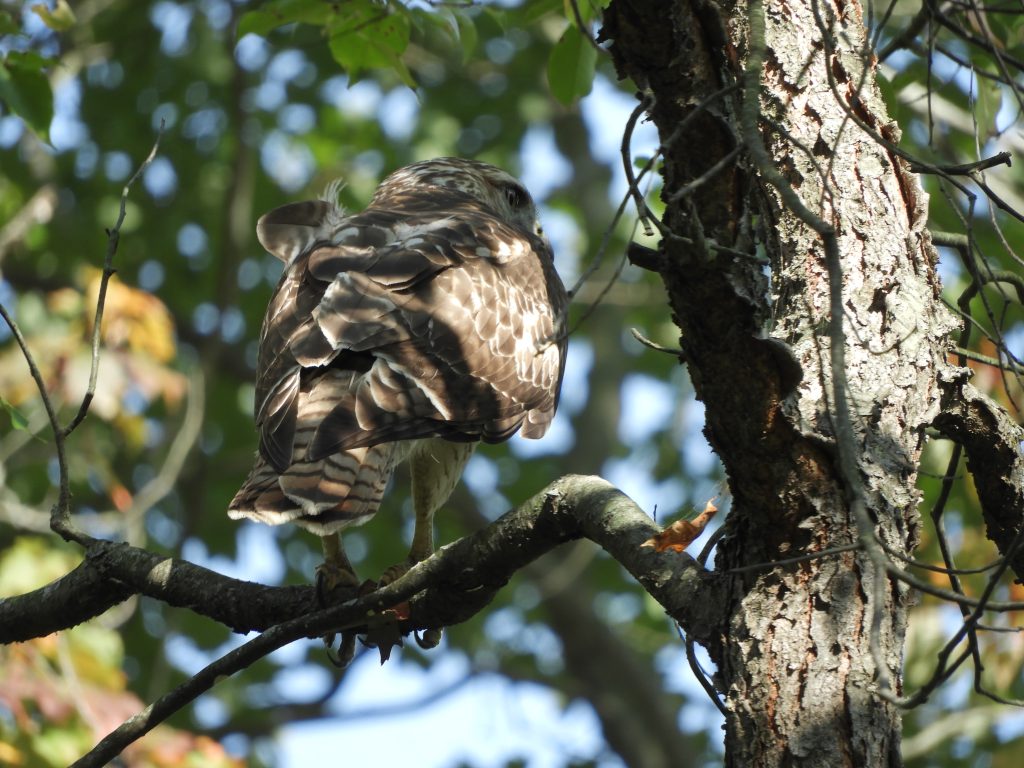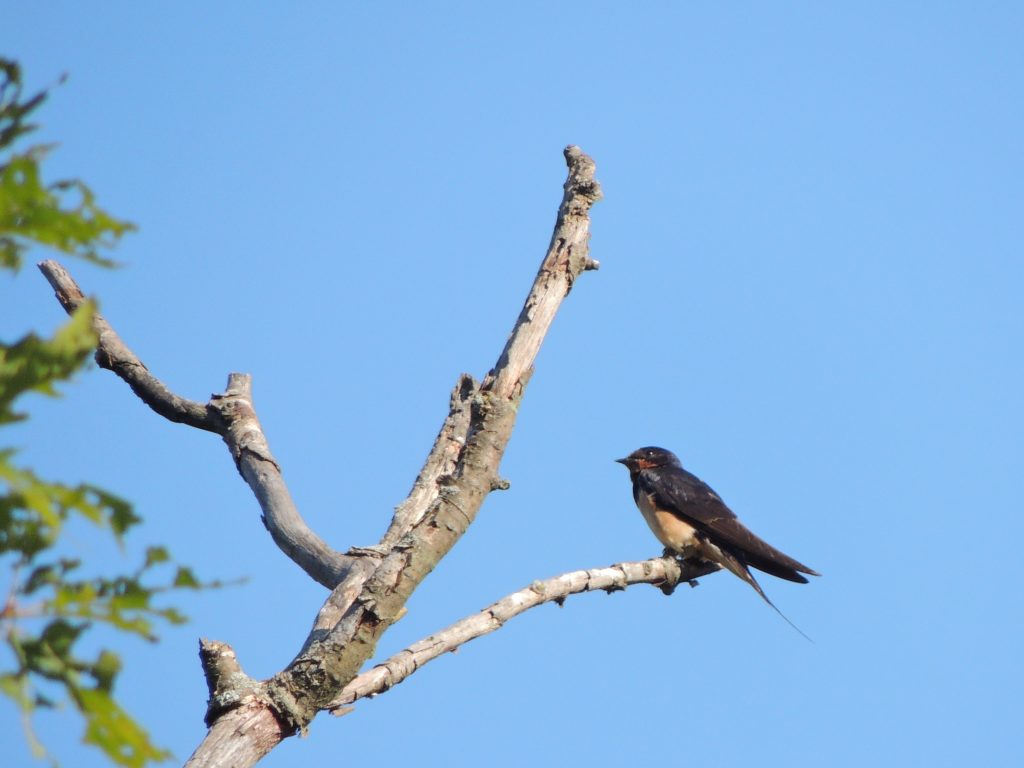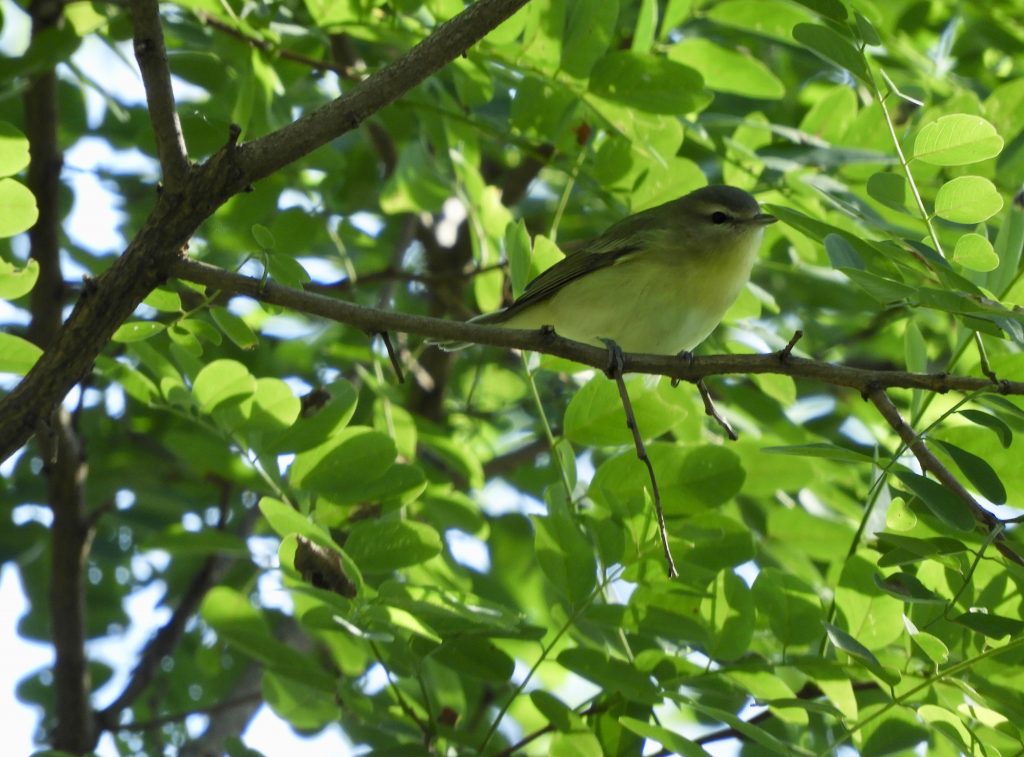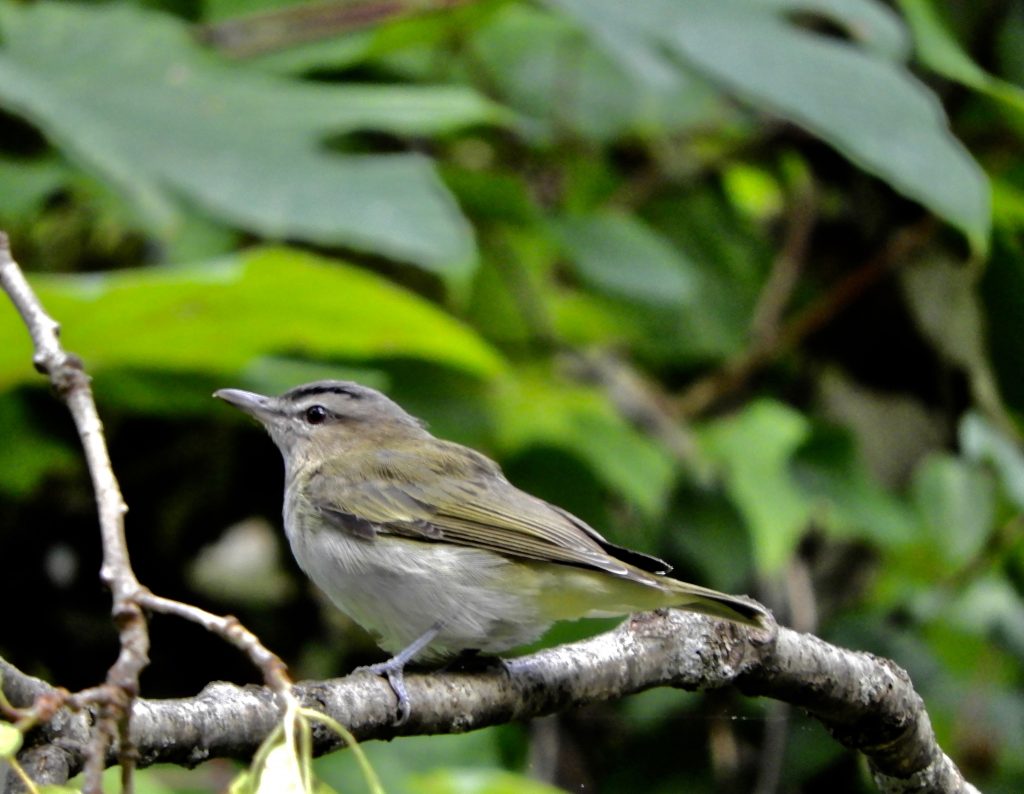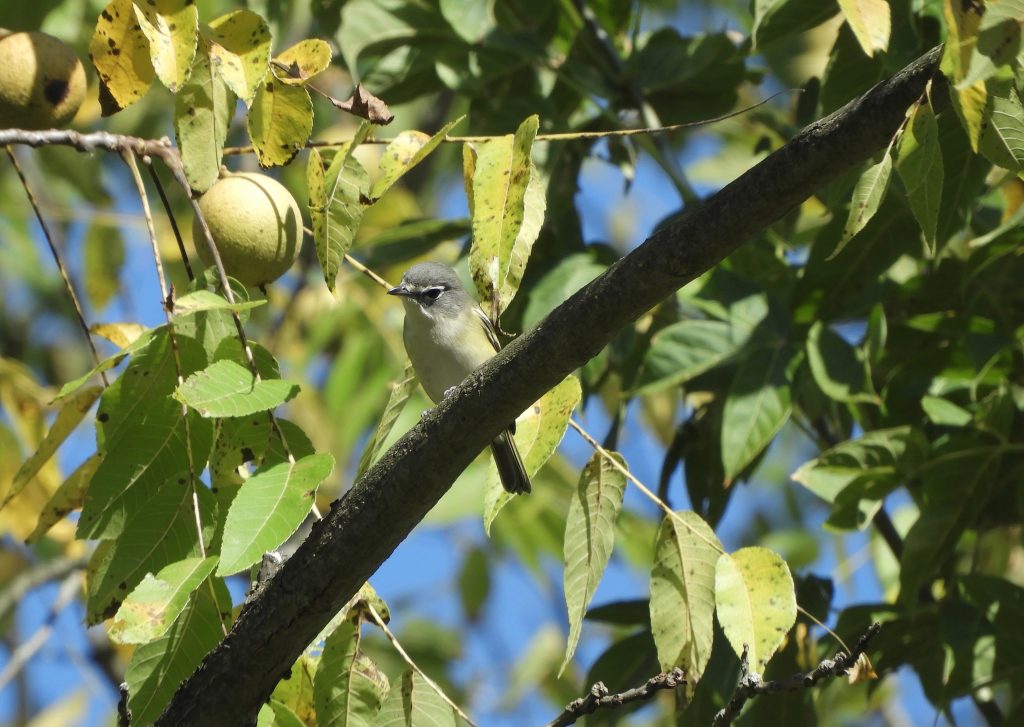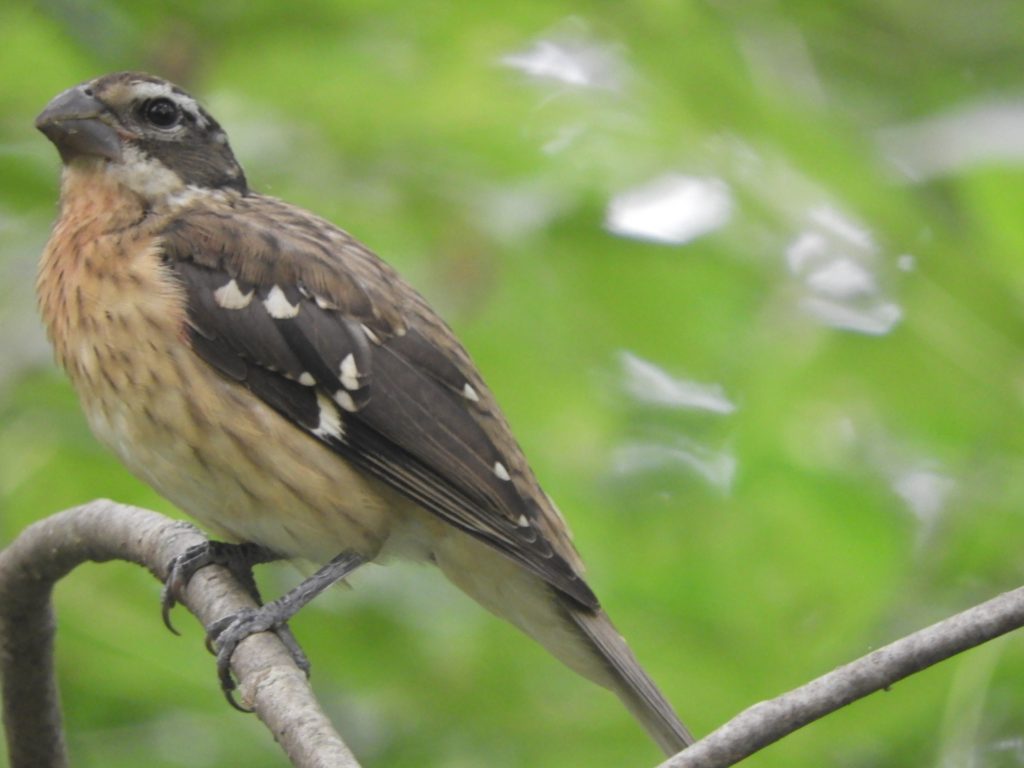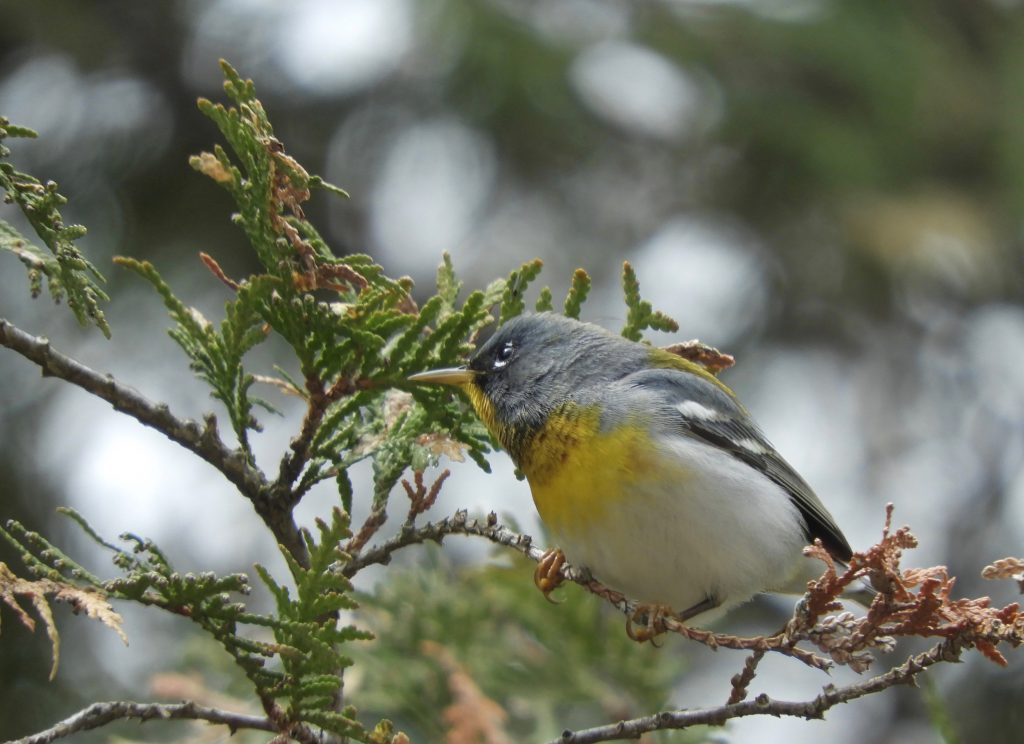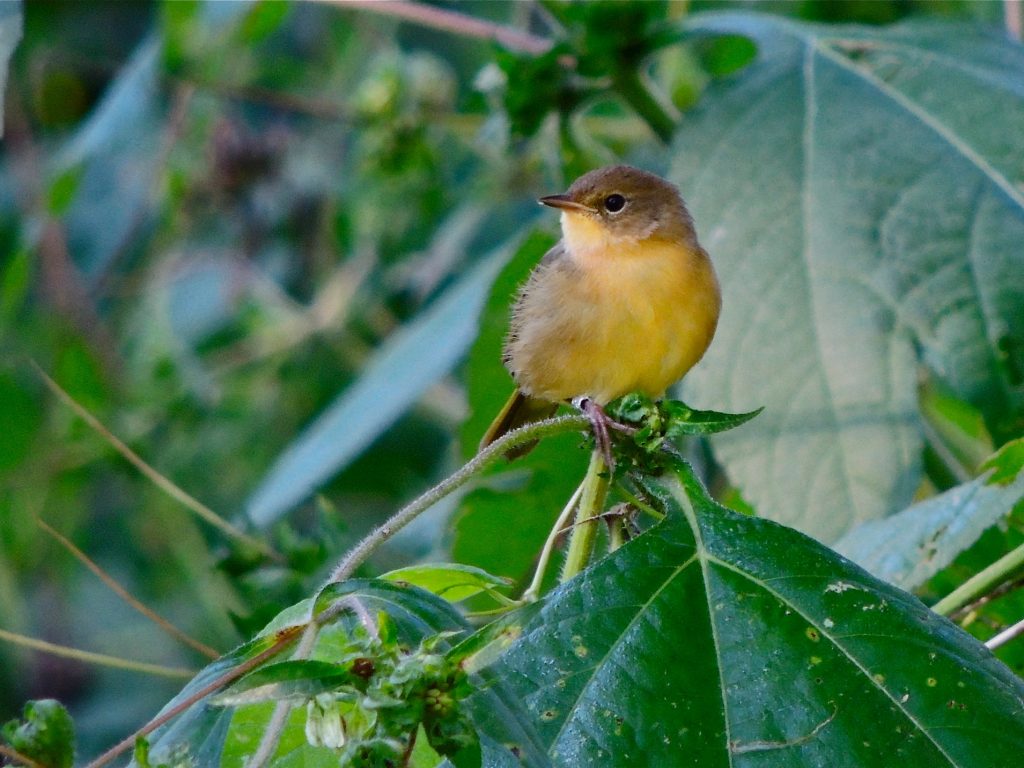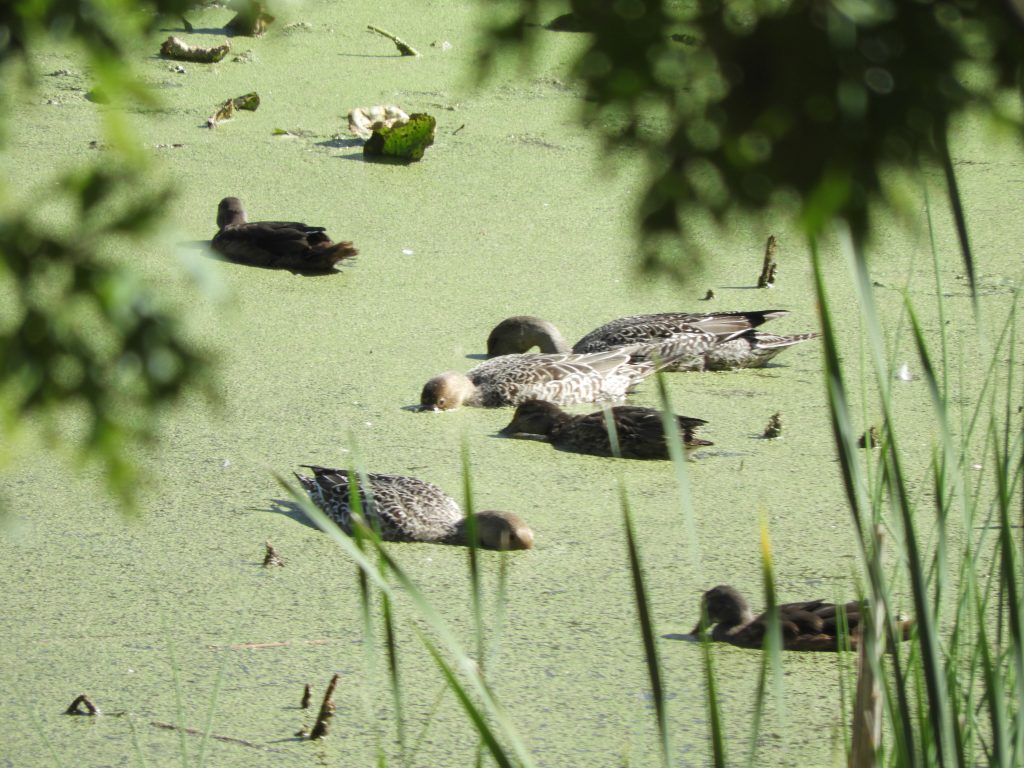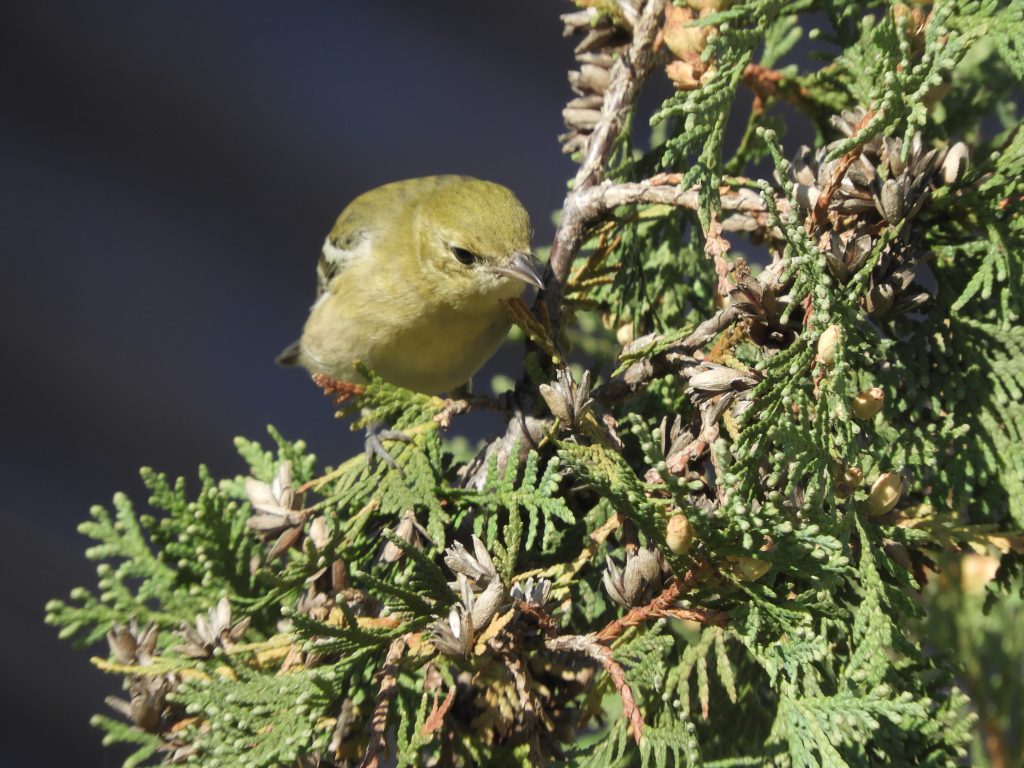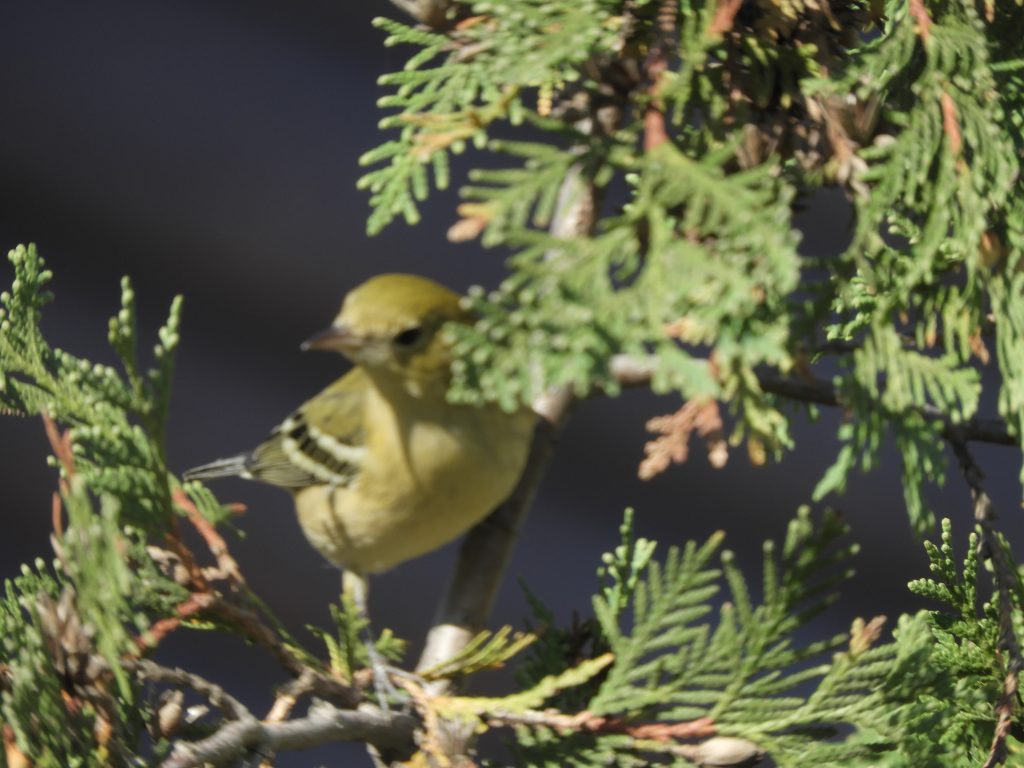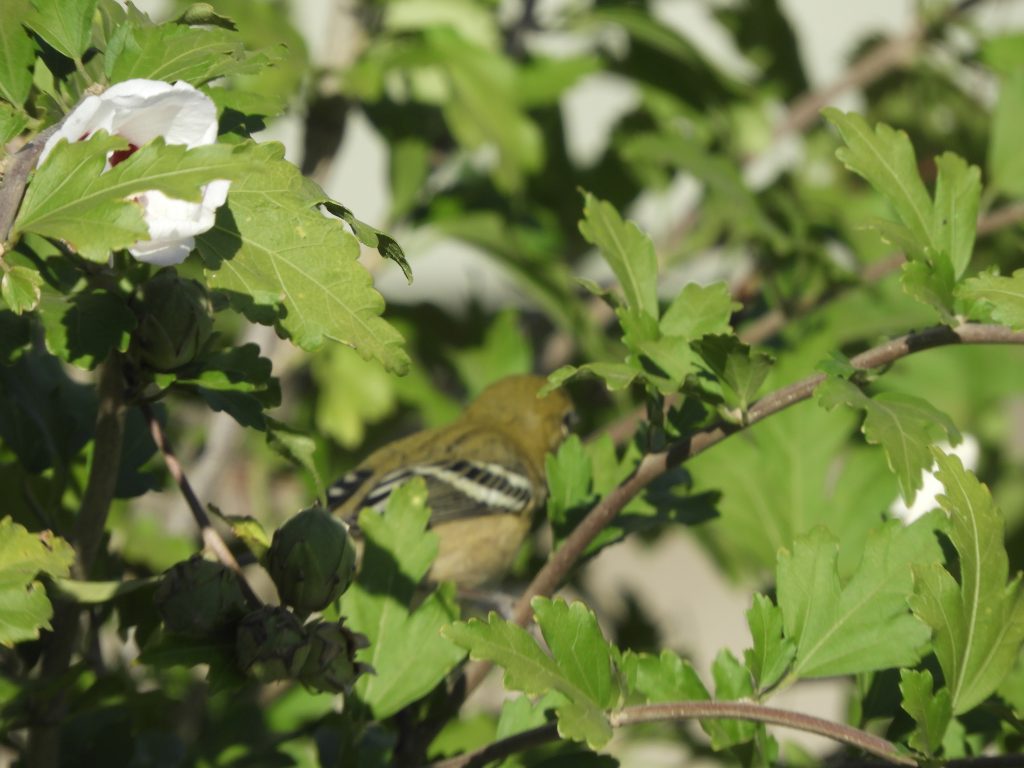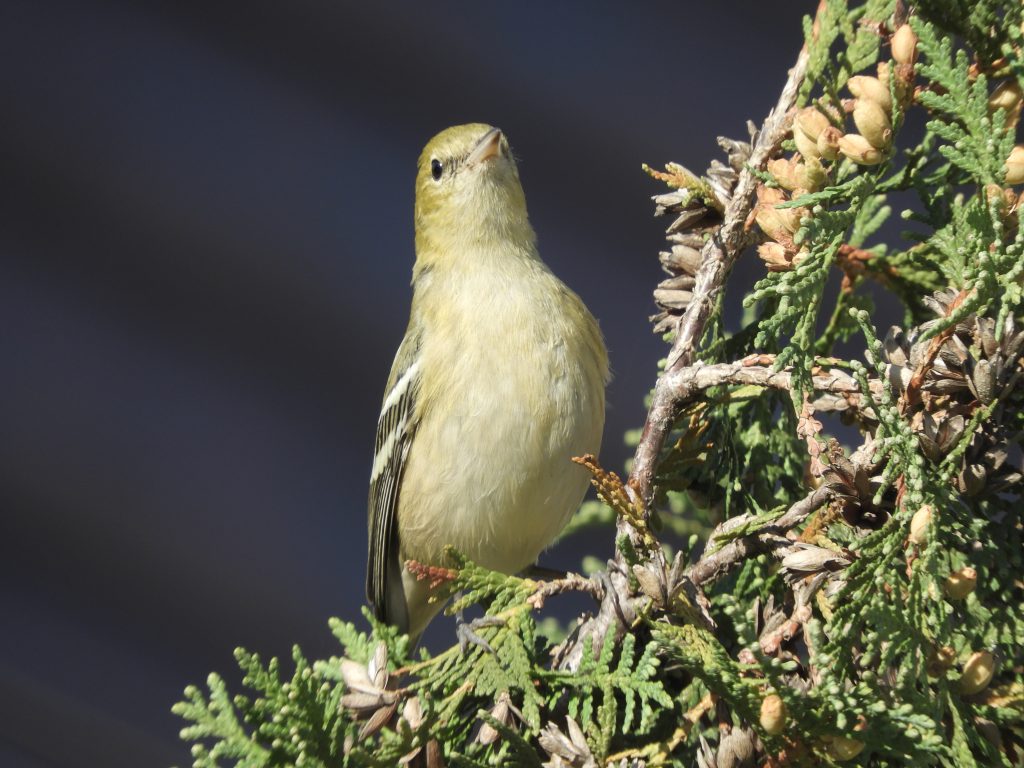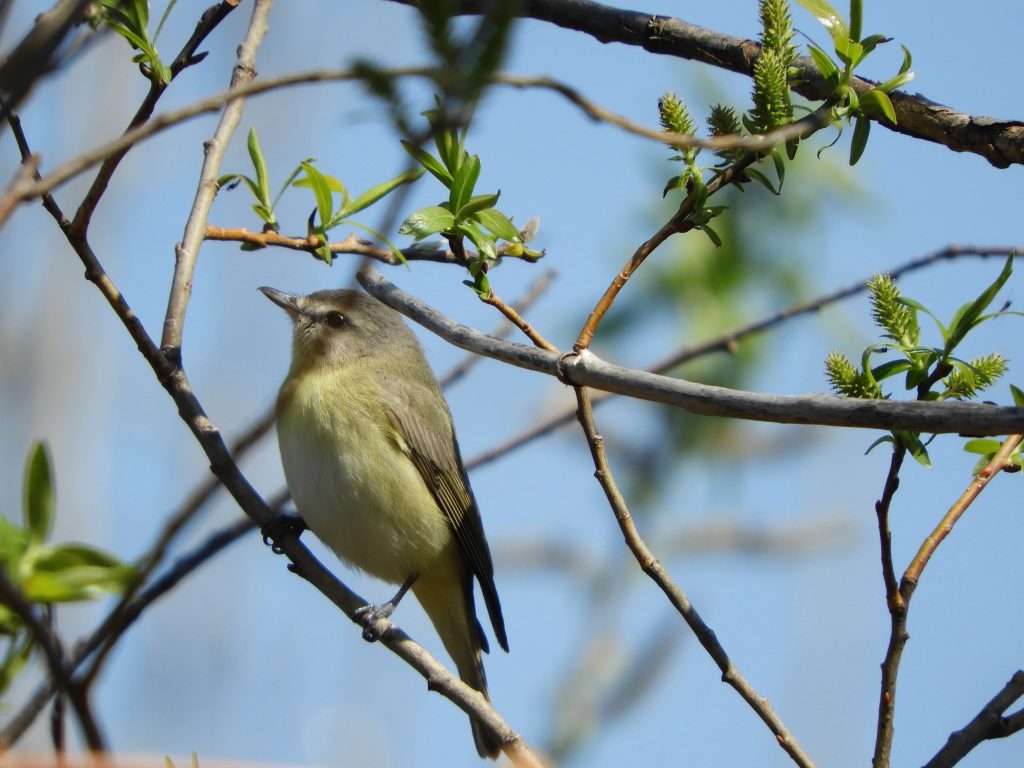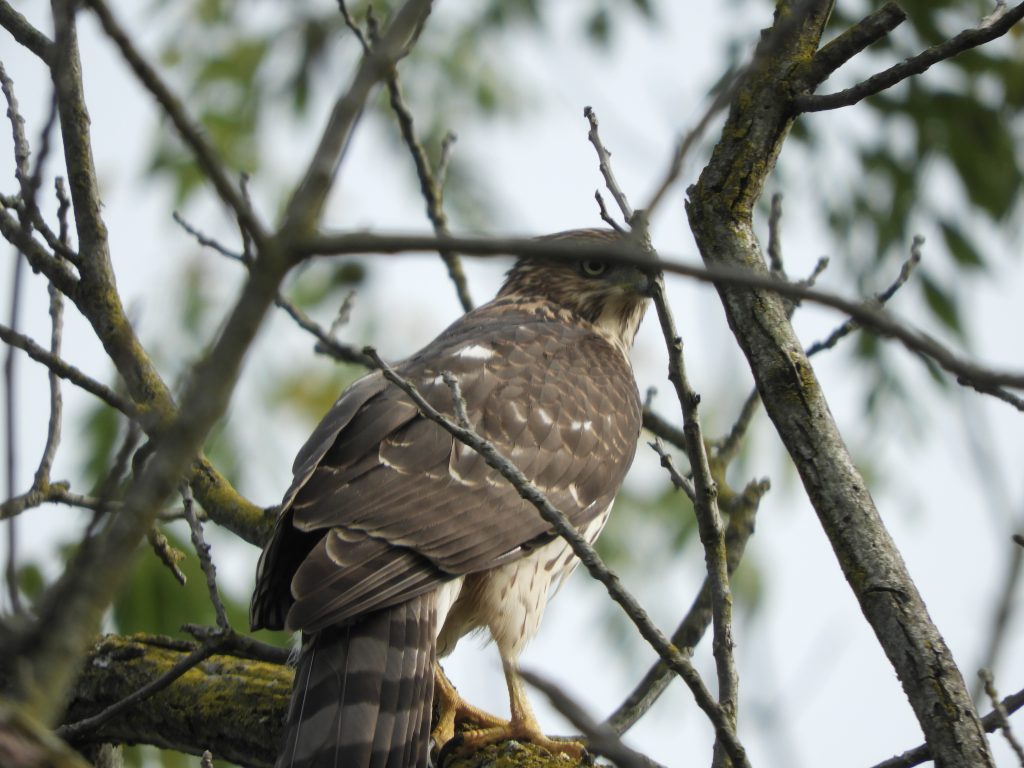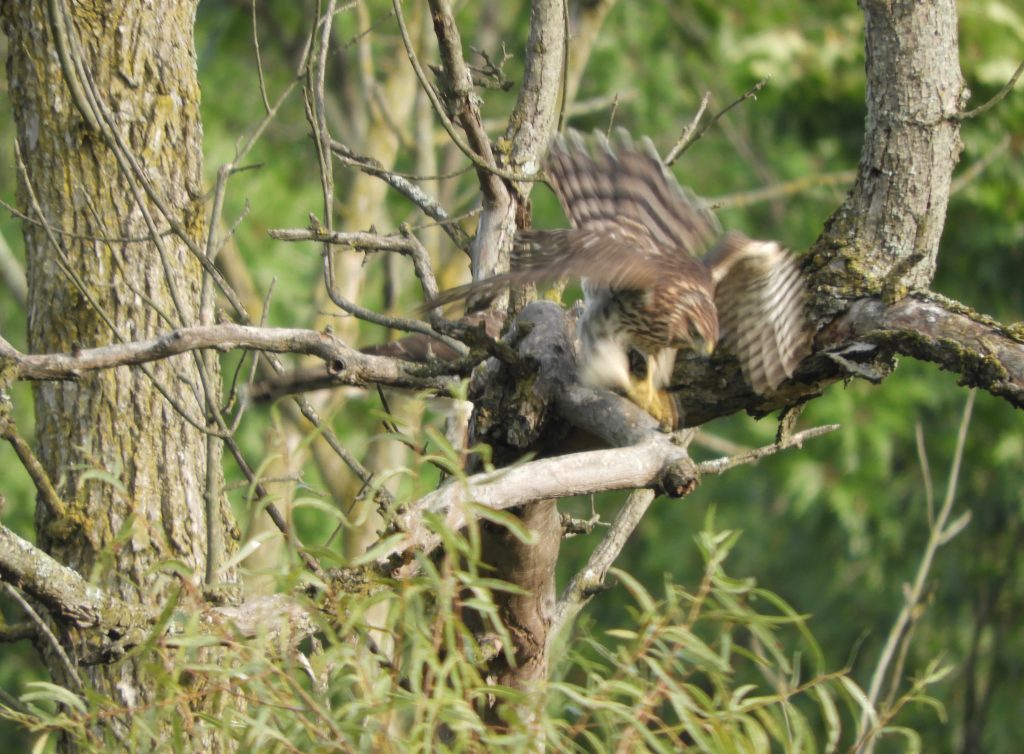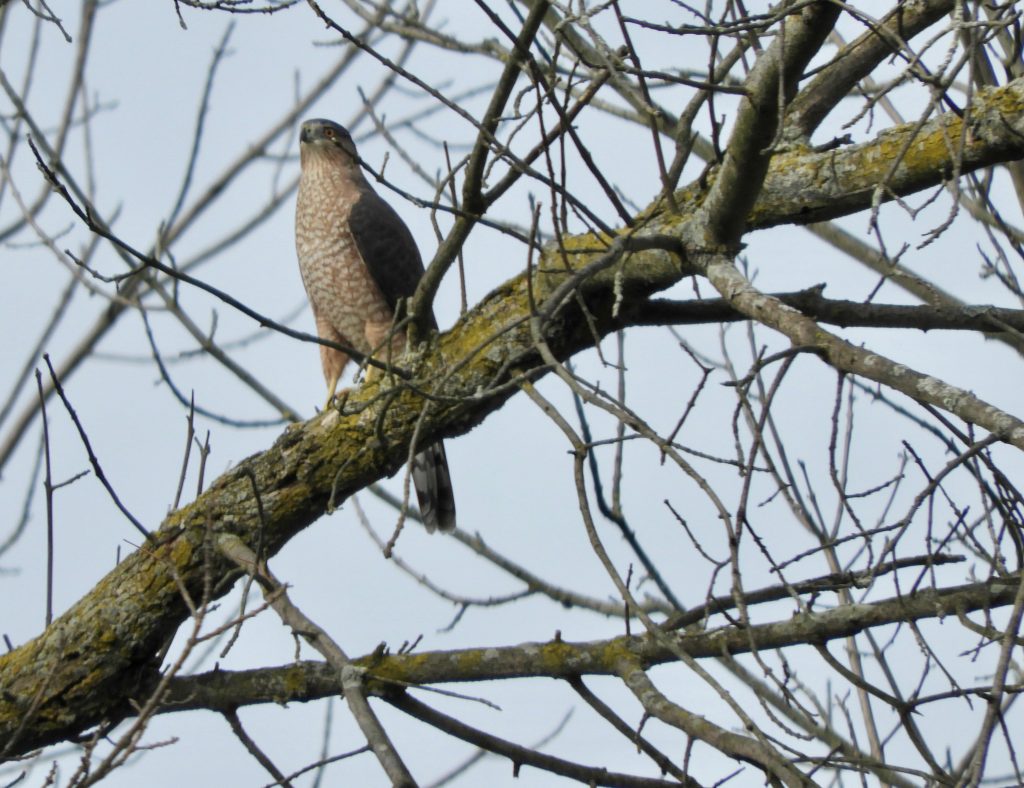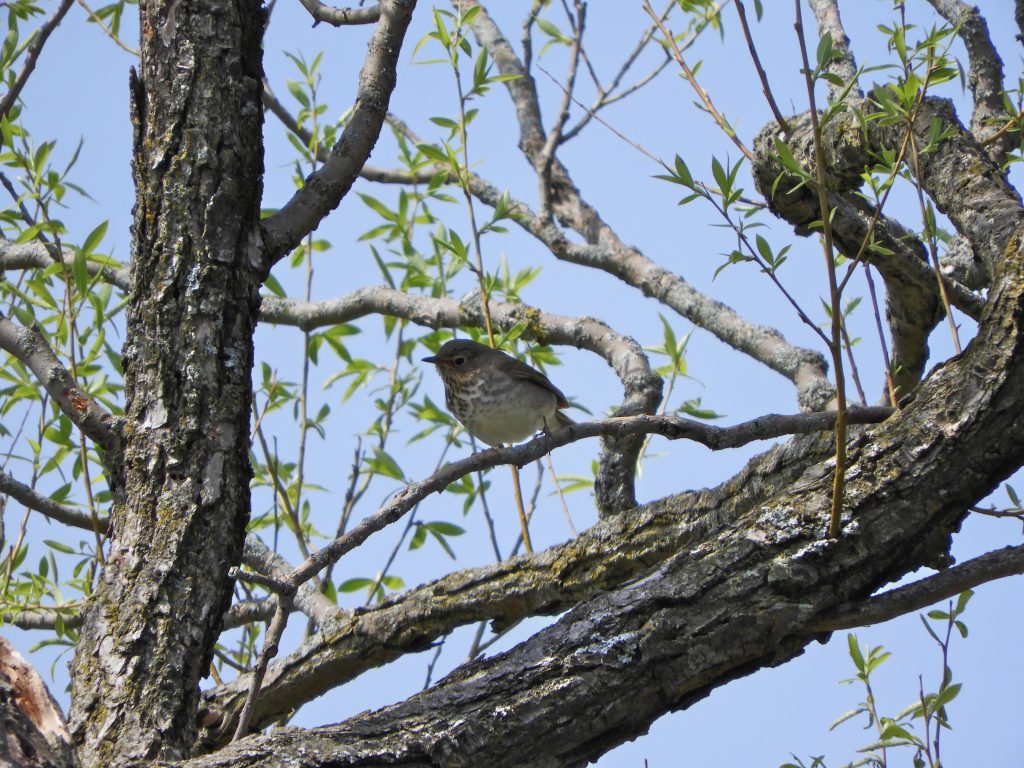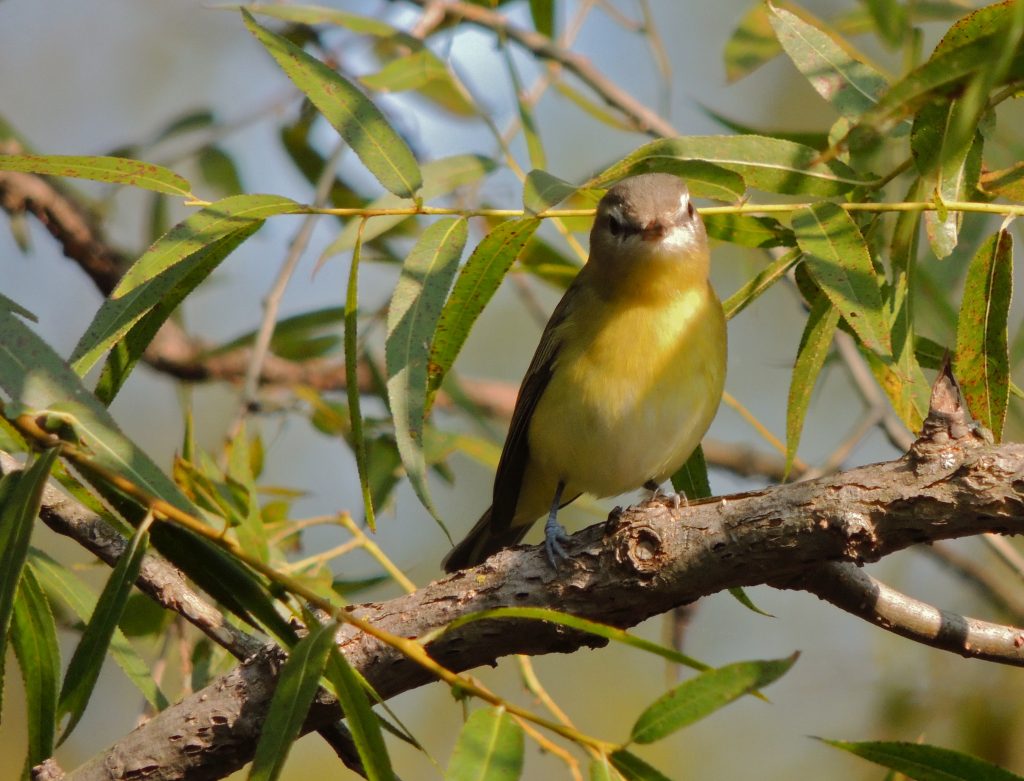RBG. Hendrie Valley, Burlington ON. September 28th. 2020. I scheduled myself to complete one of our regular transects in the valley this morning. These late September days hold many surprises and delights most of which are milestones in the seasonal shift. Today dealt many delights and at least four surprises.
First delightful surprise and Bird of the Day, was this Indigo Bunting, a female. Indigo Buntings are not rare but somehow are much more often heard than seen. Following the distinctive song of a male in summer will lead you to a small, almost electric-blue bird, but almost never will you see the female. She does her job best staying out of sight after all, and she is every bit as plain as the male is gaudy, indeed plainness is her defining characteristic.
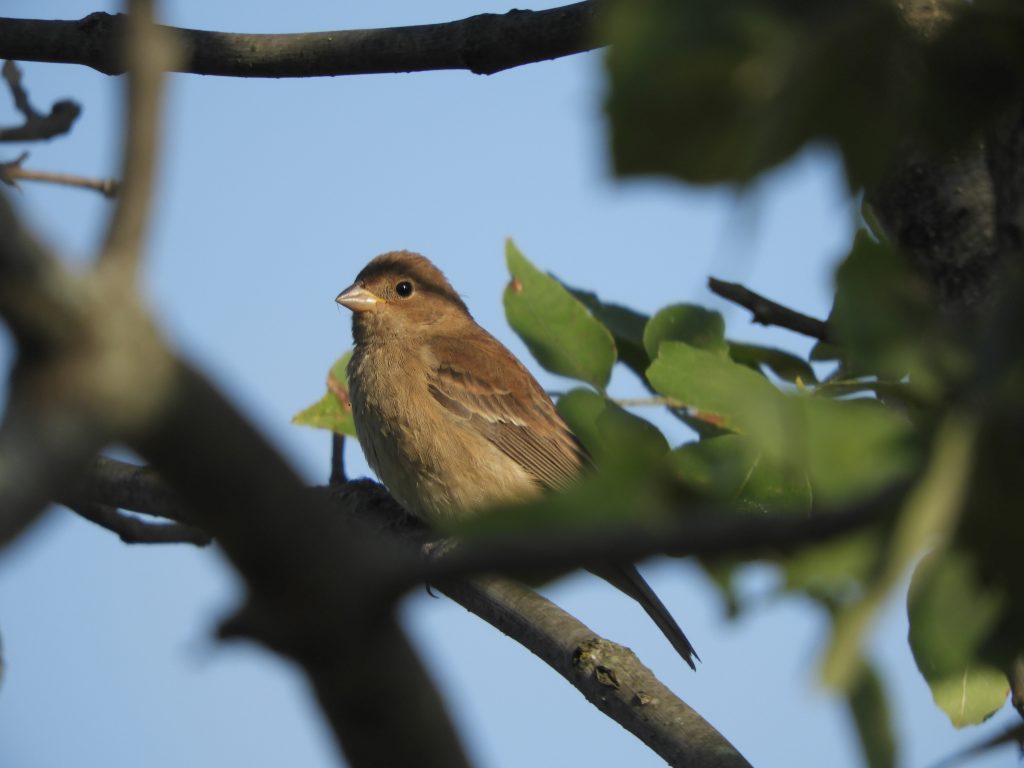
Presence or absence of field marks is what makes bird identification the challenge it is. In the case of a female Indigo Bunting the plot thickens: Head stripes? No; Facial markings? No; Eye ring? No; streaking, spots or blotches? Nothing. Wing bars? Yes but faintly. Above is today’s bird and, for contrast, a male (below) in all his glory, photographed last May.
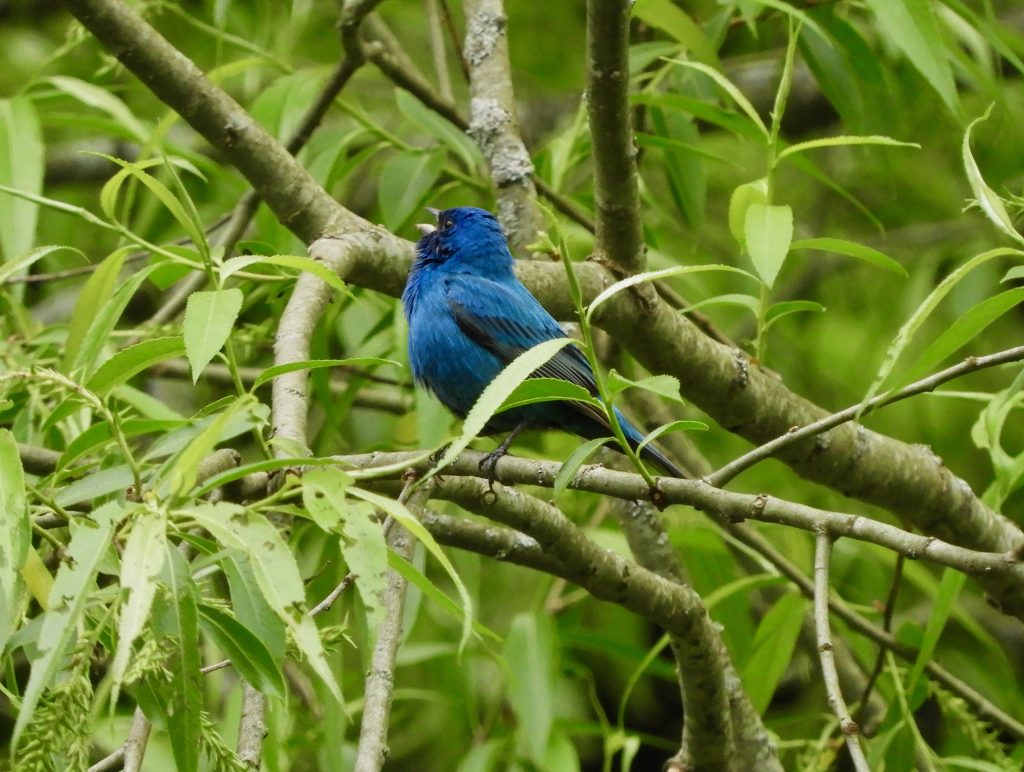
Spotting an Eastern Screech Owl was a nearly-surprise. We know this bird and that it favours a particular tree cavity but rarely do we actually see it. Whether it is always there but usually hunkered down, or whether it has several daytime refuges I don’t know. But it was photo-worthy out sunning itself today to the delight of many passers-by.
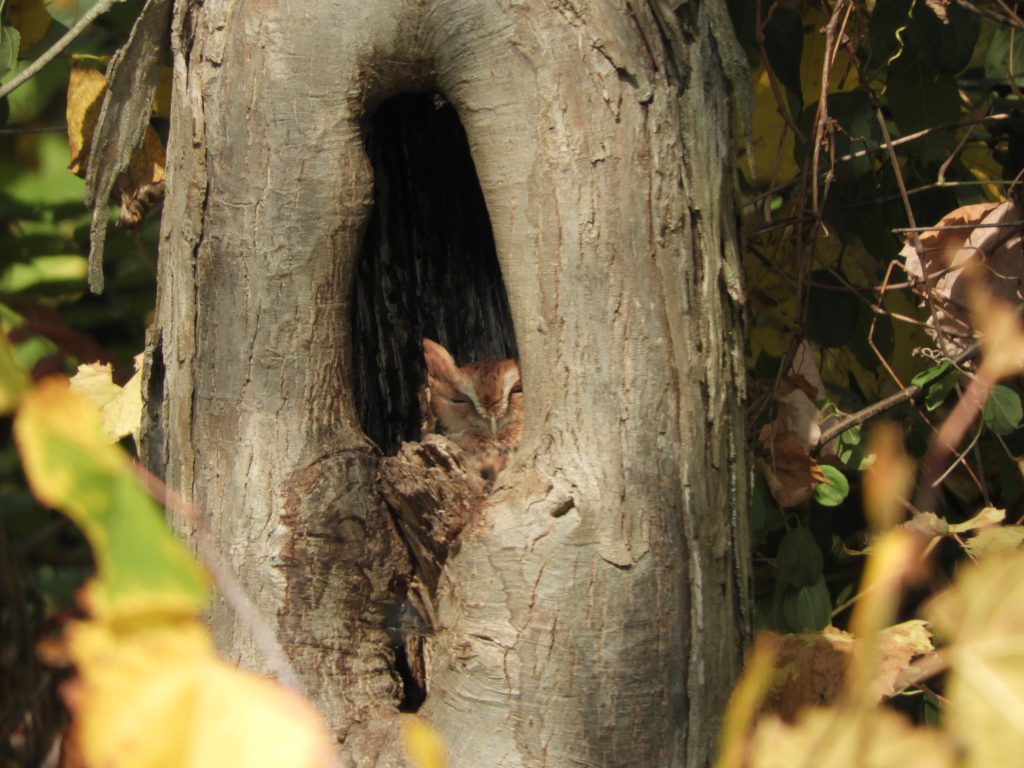
Surprise number three was to watch a Sharp-shinned Hawk being drawn reluctantly into a catch-me-if-you-can game with a group of Blue Jays. Although the jays seemed to want to play, the Sharp-shinned Hawk wasn’t very interested and preferred to sail around in wide circles warmed by the September sun.
As we wrapped up our circuit we stopped to watch a Red-eyed Vireo feasting on the berries of a Spindle Tree. We commented on how unusually motionless and obscure it had become and then the answer sailed overhead and perched just a few metres away: this Cooper’s Hawk. The presence of predators will often make potential victims freeze and I’m sure that’s what was on the vireo’s mind.
